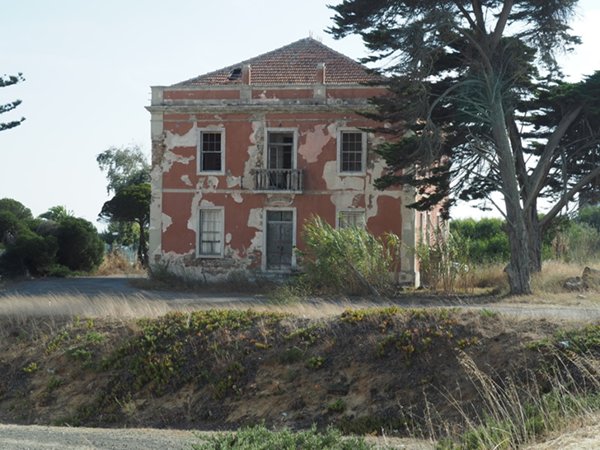Sines: 37:57.10N 08:52.50 W

Seaflute
Wed 21 Sep 2016 18:51
motor sail from Cascais (we finally found out it was pronounced Kush Kaish
courtesy of Lonely Planet). Sines is a fishing town and industrial port. The
marina is a sweet little place tucked away behind the inner breakwater and
looks out over a pretty semi-circular sandy beach which is kept very well -
raked every night and tidied up. We were helped in by a lovely retired chap
from South Wales who lives on his boat in the marina.he was very keen to
tell us that his state pension went a lot further out here, 2Euros for a
pint would support this. Sines is a major fishing port and the boats park up
on the opposite side of the bay and are inundated by sea gulls - bit like
something out of The Birds. We took a photo of a rather "tortured" squid
whilst walking around the fish market.
The town is up a very steep hill and a mix of old and modern. The old
medieval town is centred around the castle and church and includes narrow
cobbled streets, parallel to the sea, crossed by perpendicular streets
(typical medieval layout) with small houses, bars, restaurants and shops on
either side, so very well lived in. The newer development is further up the
hill and a mix of houses and apartments within a commercial and retail area.
All this hides a massive energy and oil refining industry behind the inner
breakwater and the town - would not know that it was there, other than the
pong (originally assessed as occasional but after two days here, has been
increased to fairly frequent) and the big tankers coming in and out.
Sines is an old place and can trace its origins back to the Visigoths
followed by the Punics, with various artefacts discovered, including some
from Egypt. Most evidence was destroyed by the Romans who then used Sines
as a fishing port producing salted fish and as an industrial centre. The
area now occupied by the 15th century Sines Castle was originally some sort
of Castro before the castle itself was built and this saw action during
Roman times and later in the 7th century when the Moors sacked the place.
Moorish ships regularly patrolled the waters, until the 13th century, when
Afonso III conquered the region. The castle was constructed to defend the
wealth of the local merchants, especially from a plethora of pirates, some
no doubt of English origin. Vasco da Gama was born here in 1460-ish and
given feudal rights when he returned from India. Napoleon's troops popped in
during the early 1800s, pillaging the town and defacing the royal coat of
arms over the castle door. Sines developed as an industrial complex from
the mid 1800s (cork, canning, fishing), changing to oil/petrochem in 1970
when the deep sea port industrial complex was completed. Still has a
thriving fishing industry too which clearly feeds all the feral cats by the
fishing dock.
Effects of the recession are clearly evident with a sense of dilapidation in
parts including closed up restaurants and empty, abandoned houses - some
brilliant rebuild projects though. The old town has more of a buzz but
relatively few restaurants and bars. Just need to remember that most close
on Monday as we found out!! So it was Hobsons choice but it served good
food, played good music and made great cocktails - the boys rolled back at
1am after a few manhattans!!
The latest instalment of video can be found here!
https://www.youtube.com/watch?v=wln_YCHLYwI
GEOLOGY: Sines Formation includes igneous gabbro-diorite intrusion with
syenites surrounding to the east, north and west and covered by 5 to 10m of
sand. Area is seismically active with a 7.5 recorded in 1969. Geology is
conducive to underground LPG storage.
Bye for now
Ian&Liz





